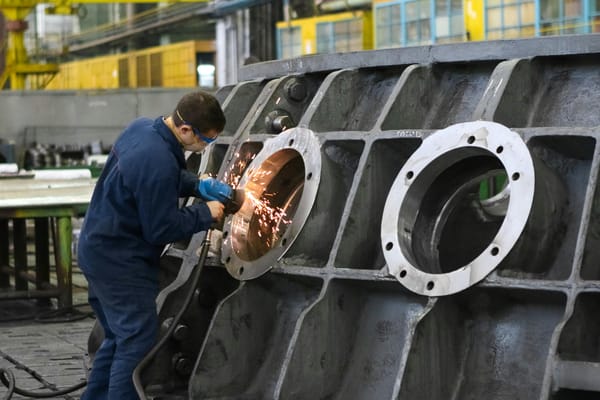Most advanced manufacturing leaders are watching the semiconductor battle play out. But too many are missing the point.
This isn’t just about chips. It’s about everything that comes next.
TSMC’s $165 billion U.S. investment. China’s claim that it can produce advanced chips without U.S. tools. Export controls shaping design choices. Trade policy overriding engineering logic. These are not isolated developments. They are a preview of the next five years across your entire supply chain.
And yet, most boardrooms are still running strategy like it’s 2015.
You’re not watching the real risk
The threat is not a tech gap. It’s a decision-making gap. Most manufacturers are still optimizing for scale and cost under the assumption that trade flows will remain open and that technology will evolve predictably.
But today, production is political. Resilience matters more than marginal efficiency. Regulatory drift, political pressure, and geopolitical alignment are now defining where and how you build.
If you’re waiting for this to affect your sector, you’re already behind. It’s already showing up in blocked factory permits, blacklisted suppliers, and new pressure to explain your sourcing decisions to customers and governments alike.
The old strategy map is leading you off a cliff
Let’s be blunt: the planning frameworks built for a globalized era no longer hold. Forecasts assume linear innovation. Supplier vetting processes ignore political alignment. Expansion plans rely on last year’s assumptions about tariffs, partnerships, and logistics.
But the terrain has shifted. Fast.
Manufacturing has moved from neutral ground to contested space. And if you’re still navigating by the old map, you won’t just lose time, you’ll lose access.
Your competitors are quietly repositioning
The smartest strategy teams are not just tracking what’s happening in semiconductors. They’re studying it, treating it as an early-warning system for their own operations. And most importantly, they’re acting.
They’re redrawing expansion maps, stress-testing their supplier base for political exposure, building second-layer options in friendlier jurisdictions, and updating risk models to include trade retaliation, regulatory whiplash, and narrative risk… not just logistics.
And they’re doing it now before the pressure hits their industry.
Meanwhile, most teams are still waiting for clarity
That’s the biggest miss: the assumption that “it’s too soon to tell.” That someone else (legal, ops, comms) will flag the issue when it matters. But by the time the risk is obvious, it’s too late to avoid it.
Semiconductors didn’t get this way overnight. It took years of missed signals, ignored warnings, and delayed decisions. If you think your sector is immune, ask yourself: What if your top supplier was suddenly labeled a national security threat? What if a new subsidy law penalized your global footprint? What if a narrative formed (fair or not) that your company was on the wrong side of a policy battle?
These aren’t hypotheticals anymore.
What’s missing from most strategy playbooks
It’s not more data; it’s the ability to make sense of ambiguity before it becomes policy.
Right now, most dashboards can’t tell you:
- Whether a new supplier is politically viable
- Whether your market expansion plan will survive a shift in diplomatic tone
- Whether public sentiment is turning against your footprint
That’s where the edge is now; not in faster data, but in clearer foresight.
You don’t need certainty. You need a new lens
The rules have changed. Advanced manufacturing is operating in an environment where trade, trust, and territory are up for grabs. The companies that win won’t be the ones who wait for a perfect picture. They’ll be the ones who can act with confidence in imperfect conditions.
That means building real-time clarity into your strategy inputs. It means pressure-testing assumptions against scenarios that include political volatility, not just price increases or delivery delays. And it means updating your risk lens to reflect where the real friction is coming from.
This isn’t a tech story anymore; it’s a strategic one. The supply chain is splitting. The map has changed.
And if your strategy hasn’t, you’re already behind.







